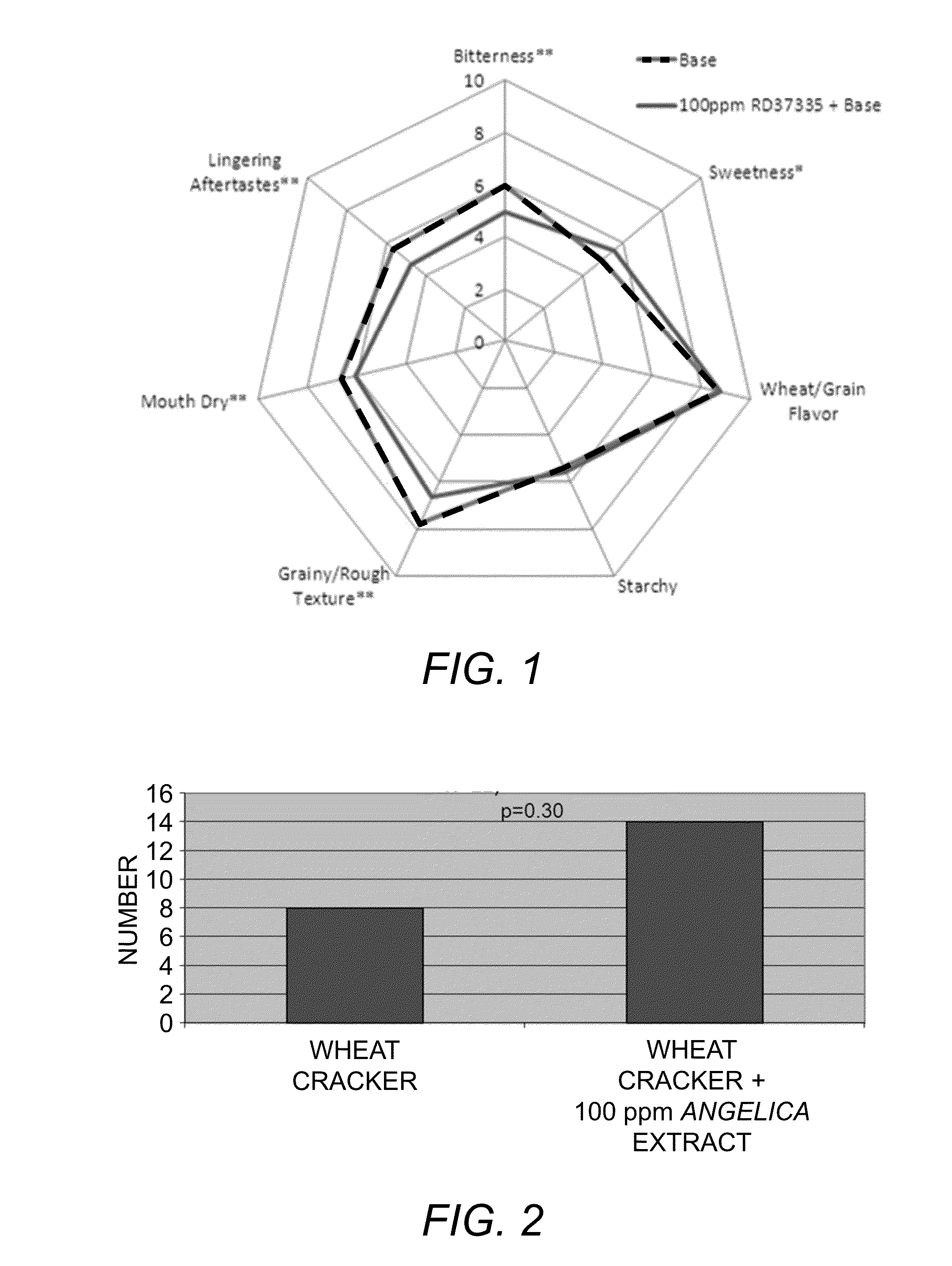Taste modulator and method of use thereof
a technology of taste modulator and sour taste, which is applied in the directions of biocide, plant/algae/fungi/lichens, baking products, etc., can solve the problem of limiting the use of current whole grain wheat flour in bakery and snack products
- Summary
- Abstract
- Description
- Claims
- Application Information
AI Technical Summary
Benefits of technology
Problems solved by technology
Method used
Image
Examples
example 1
Preparation of Water Extract of Angelica Root
[0032]Angelica sinensis root (100 g, dried, cut, and sifted) was placed in a jacketed percolator. The root sample was extracted with 500 mL water by continuous percolation at 70° C. for 3 hours. The water extract was then discharged and collected. The extraction procedure was repeated twice, each time with 300 mL water, under the same percolation conditions. The water extracts were then pooled, clarified by filtration and dried to provide a powder of Angelica root extract. The yield was approximately 40 to 45 g.
example 2
Preparation of Washed Water Extract of Angelica Root
[0033]Angelica sinensis root (100 g, dried, cut, and sifted) was placed in a jacketed percolator.
[0034]The root sample was extracted with 500 mL water by continuous percolation at 70° C. for 3 hours. The water extract was then discharged and collected. The extraction procedure was repeated twice, each time with 300 mL water, under the same percolation conditions. The water extracts were then pooled and concentrated to a volume of approximately 300 mL using a conventional drying method. The concentrated extract was then washed (liquid-liquid extraction) with 100 mL 2-butanol. The 2-butanol layer was discarded and the aqueous layer was washed two more times with the same amount of 2-butanol. The washed aqueous layer was then dried to provide a powder of Angelica root extract. The yield was approximately 40 to 45 g.
example 3
Preparation of Ethanol Extract of Angelica Root
[0035]Angelica sinensis root (100 g, dried, cut, and sifted) was placed in a jacketed percolator. The root sample was extracted with 500 mL ethanol (190 proof) by continuous percolation at 70° C. for 3 hours. The ethanolic extract was then discharged and collected. The extraction procedure was repeated twice, each time with 300 mL ethanol (190 proof), under the same percolation conditions. The ethanolic extracts were then pooled, clarified by filtration and dried to provide a powder of Angelica root extract. The yield was approximately 20 to 30 g.
PUM
 Login to View More
Login to View More Abstract
Description
Claims
Application Information
 Login to View More
Login to View More - R&D
- Intellectual Property
- Life Sciences
- Materials
- Tech Scout
- Unparalleled Data Quality
- Higher Quality Content
- 60% Fewer Hallucinations
Browse by: Latest US Patents, China's latest patents, Technical Efficacy Thesaurus, Application Domain, Technology Topic, Popular Technical Reports.
© 2025 PatSnap. All rights reserved.Legal|Privacy policy|Modern Slavery Act Transparency Statement|Sitemap|About US| Contact US: help@patsnap.com

